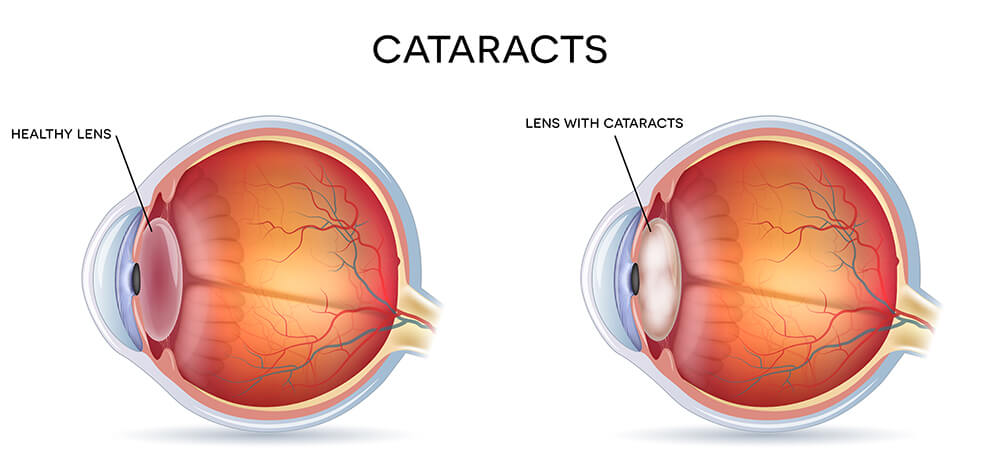What is a Cataract?
The lens of the eye focuses light from objects onto the retina. The lens pushes the old focusing fibers into the center, causing haziness or a film. Because the lens has neither nerves nor blood vessels, it depends on the internal flow of fluid inside the eye (aqueous humor) to provide oxygen and nutrients, and to remove toxic products.

The lens focuses light constantly, from distant objects to near objects. Some of the light wavelengths, such as ultraviolet light, are especially toxic. UV light creates more free radicals, which will accelerate the clouding of the lens over the years. Any clouding of the lens is a cataract (not cataracts). A cataract may be central (called nuclear); peripheral (on younger fibers near the outer edge of the lens); or sub-capsular (at the very front or very back of the lens).
The number one cause of blindness in the world is cataracts, and it is preventable, as well as treatable. Symptoms of cataracts include hazy vision, glare, difficulty focusing on the printed page, rapid eye fatigue, even double vision. Some people will develop second sight, meaning, that as they grow older, they may see better without their glasses, because the cataract is actually changing the prescription of the eye. Always check to see if your glasses can be improved.

